The nose is an olfactory and respiratory organ. It consists of nasal skeleton, which houses the nasal cavity. The nasal cavity has four functions:
- Warms and humidifies the inspired air.
- Removes and traps pathogens and particulate matter from the inspired air.
- Responsible for sense of smell.
- Drains and clears the paranasal sinuses and lacrimal ducts.
In this article, we shall look at the anatomy of the nasal cavity – its divisions, structure and neurovascular supply.
Divisions
The nasal cavity is the most superior part of the respiratory tract. It extends from the vestibule of the nose to the nasopharynx, and has three divisions:
- Vestibule – the area surrounding the anterior external opening to the nasal cavity.
- Respiratory region – lined by a ciliated psudeostratified epithelium, interspersed with mucus-secreting goblet cells.
- Olfactory region – located at the apex of the nasal cavity. It is lined by olfactory cells with olfactory receptors.
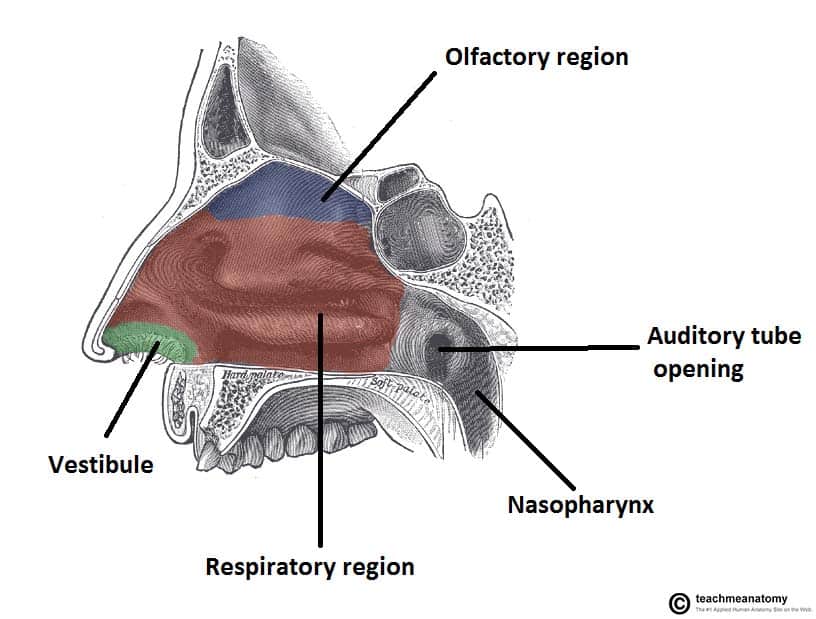
Fig 1 – Sagittal section of the nasal cavity. Conchae are present on the lateral walls
Nasal Conchae
Projecting out of the lateral walls of the nasal cavity are curved shelves of bone. They are called conchae (or turbinates). The are three conchae – inferior, middle and superior.
They project into the nasal cavity, creating four pathways for the air to flow. These pathways are called meatuses:
- Inferior meatus – between the inferior concha and floor of the nasal cavity.
- Middle meatus – between the inferior and middle concha.
- Superior meatus – between the middle and superior concha.
- Spheno-ethmoidal recess – superiorly and posteriorly to the superior concha.
The function of the conchae is to increase the surface area of the nasal cavity – this increases the amount of inspired air that can come into contact with the cavity walls. They also disrupt the fast, laminar flow of the air, making it slow and turbulent. The air spends longer in the nasal cavity, so that it can be humidified.
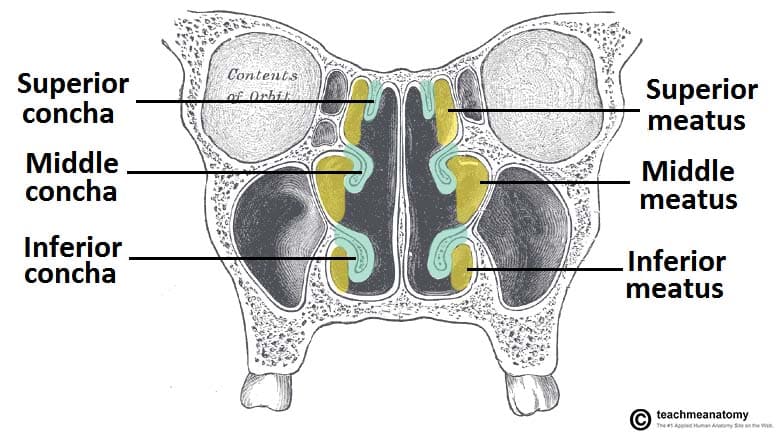
Fig 2 – Coronal section of the anterior nasal cavity. The spheno-ethmoidal recess is located posteriorly,and not visible on this diagram.
Openings into the Nasal Cavity
One of the functions of the nose is to drain a variety of structures. Thus, there are many openings into the nasal cavity, by which drainage occurs.
The paranasal sinuses drain into the nasal cavity. The frontal, maxillary and anterior ethmoidal sinuses open into the middle meatus. The location of this opening is marked by the semilunar hiatus, a crescent-shaped groove on the lateral walls of the nasal cavity.
The middle ethmoidal sinuses empty out onto a structure called the ethmoidal bulla. This is a bulge in the lateral wall formed by the middle ethmoidal sinus itself. The posterior ethmoidal sinuses open out at the level of the superior meatus.
The only structure not to empty out onto the lateral walls of the nasal cavity is the sphenoid sinus. It drains onto the posterior roof.
In addition to the paranasal sinuses, other structures open into the nasal cavity:
- Nasolacrimal duct – acts to drain tears from the eye. It opens into the inferior meatus.
- Auditory (Eustachian) tube – opens into the nasopharynx at the level of the inferior meatus. It allows the middle ear to equalise with the atmospheric air pressure.
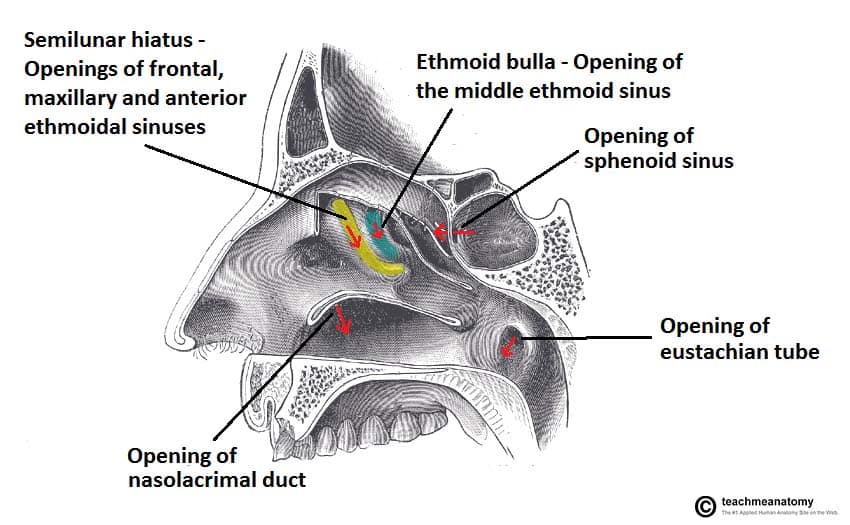
Fig 3 – The conchae have been removed, showing the various openings on the lateral wall of the nasal cavity.
Clinical Relevance: Spread of Infection
As the auditory tube connects the middle ear and upper respiratory tract, it is a path by which infection can spread from the upper respiratory tract to the ear. Infection of the auditory tube causes swelling of the mucous linings, and the tube becomes blocked. This results in diminished hearing.
Gateways to the Nasal Cavity
As well as openings for the drainage of structures, nerves, vasculature and lymphatics need to be able to access the nasal cavity.
The cribriform plate is part of the ethmoid bone. It forms a portion of the roof of the nasal cavity. It contains very small perforations, allowing fibres of the olfactory nerve to enter and exit,
At the level of the superior meatus, the sphenopalatine foramen is located. This hole allows communication between the nasal cavity and the pterygopalatine fossa. The sphenopalatine artery, nasopalatine and superior nasal nerves pass through here.
The incisive canal is a pathway between the nasal cavity and the incisive fossa of the oral cavity. It transmits the nasopalatine nerve and greater palatine artery.
Vasculature
The nose has a very rich vascular supply – this allows it to effectively change humidity and temperature of inspired air. The nose receives blood from both the internal and external carotid arteries:
Internal carotid branches:
- Anterior ethmoidal artery
- Posterior ethmoidal artery
The ethmoidal arteries are branch of the ophthalmic artery. They descend into the nasal cavity through the cribriform plate
External carotid branches:
- Sphenopalatine artery
- Greater palatine artery
- Superior labial artery
- Lateral nasal arteries
In addition to the rich blood supply, these arteries form anastomoses with each other. This is particularly prevalent in the anterior portion of the nose .
The veins of the nose tend to follow the arteries. They drain into the pterygoid plexus, facial vein or cavernous sinus.
In some individuals, a few nasal veins join with the sagittal sinus (a dural venous sinus). This represents a potential pathway by which infection can spread from the nose into the cranial cavity.
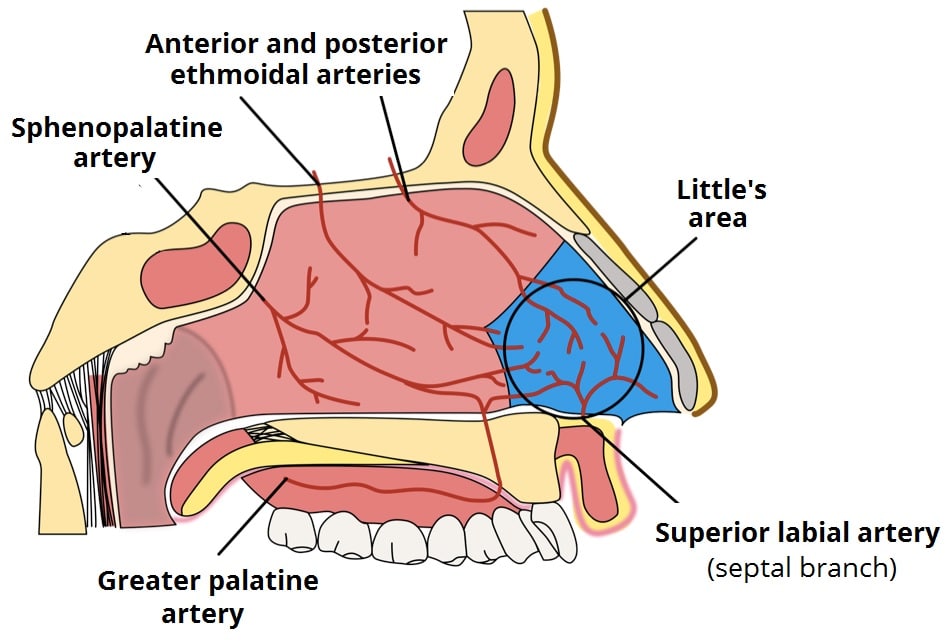
Fig 4 – Little’s area and the arterial supply to the nose.
Clinical Relevance: Epistaxis
Epistaxis is the medical term for a nosebleed. Due to the rich blood supply of the nose, this is a common occurrence. It is most likely to occur in the anterior third of the nasal cavity – this area is known as the Kiesselbach area.
The cause can be local (such as trauma), or systemic (such as hypertension).
Innervation
The innervation of the nose can be functionally divided into special and general innervation.
Special sensory innervation refers to the ability of the nose to smell. This is carried out by the olfactory nerves. The olfactory bulb, part of the brain, lies on the superior surface of the cribriform plate, above the nasal cavity. Branches of the olfactory nerve run through the cribriform plate to provide special sensory innervation to the nose.
General sensory innervation to the septum and lateral walls is delivered by the nasopalatine nerve (branch of maxillary nerve) and the nasociliary nerve (branch of the ophthalmic nerve). Innervation to the external skin of the nose is supplied by the trigeminal nerve.
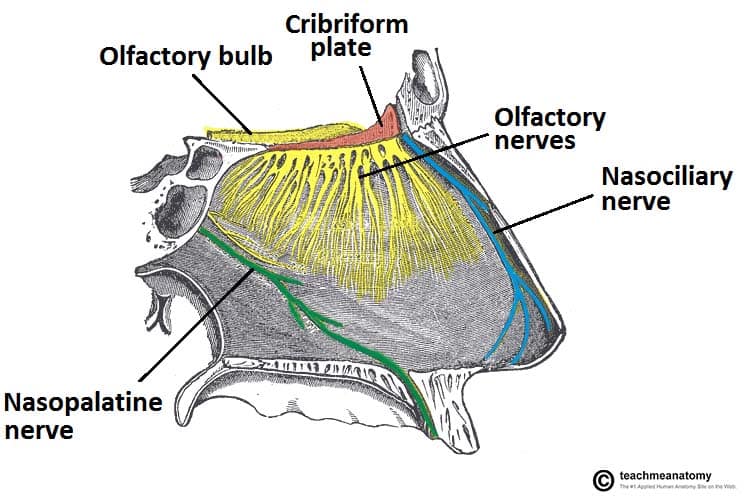
Fig 5 – Lateral view of the nasal septum. Note the close relationship of the olfactory bulb and cribriform plate
Clinical Relevance: Cribriform Plate Fracture
A fracture of the cribriform plate can occur as a result of nose trauma. It is either fractured directly by the trauma, or by fragments of the ethmoid bone.
A fractured cribriform plate can penetrate the meningeal linings of the brain, causing leakage of cerebro-spinal fluid. Exposing the brain to the outside environment like this increases the risks of meningitis, encephalitis and cerebral abscesses.
The olfactory bulb lies on the cribriform plate and can be damaged irreversibly by the fracture. In this case, the patient may present with anosmia (loss of smell).